Enhanced Terahertz Amplification Based on Photo-Excited Graphene-Dielectric Hybrid Metasurface
Abstract
:1. Introduction
2. Conductivity of Graphene
3. Reflective Amplification in Graphene-Dielectric Structure
3.1. Reflective Amplification from Monolayer Graphene
3.2. Enhanced Amplification in Graphene-Dielectric Metasurface
4. Conclusions
Author Contributions
Funding
Conflicts of Interest
References
- Nagatsuma, T.; Ducournau, G.; Renaud, C.C. Advances in terahertz communications accelerated by photonics. Nat. Photonics 2016, 10, 371–379. [Google Scholar] [CrossRef]
- Jepsen, P.U.; Cooke, D.G.; Koch, M. Terahertz spectroscopy and imaging—Modern techniques and applications. Laser Photonics Rev. 2011, 5, 124–166. [Google Scholar] [CrossRef]
- Mukherjee, P.; Gupta, B. Terahertz (THz) Frequency Sources and Antennas—A Brief Review. Int. J. Infrared Millim. Waves 2008, 29, 1091–1102. [Google Scholar] [CrossRef]
- Auston, D.H.; Cheung, K.P.; Valdmanis, J.A.; Kleinman, D.A. Cherenkov Radiation from Femtosecond Optical Pulses in Electro-Optic Media. Phys. Rev. Lett. 1984, 53, 1555–1558. [Google Scholar] [CrossRef]
- Jiang, Z.; Zhang, X.C. Terahertz imaging via electrooptic effect. IEEE Trans. Microw. Theory Tech. 1999, 47, 2644–2650. [Google Scholar] [CrossRef] [Green Version]
- Jepsen, P.U.; Jacobsen, R.H.; Keiding, S.R. Generation and detection of terahertz pulses from biased semiconductor antennas. J. Opt. Soc. Am. B 1996, 13, 2424–2436. [Google Scholar] [CrossRef]
- Marconcini, P.; Macucci, M. The k•p method and its application to graphene, carbon nanotubes and graphene nanoribbons: The Dirac equation. Riv. Nuovo Cim. 2011, 34, 489–584. [Google Scholar]
- Castro Neto, A.H.; Guinea, F.; Peres, N.M.R.; Novoselov, K.S.; Geim, A.K. The electronic properties of graphene. Rev. Mod. Phys. 2009, 81, 109–162. [Google Scholar] [CrossRef] [Green Version]
- Aleshkin, V.Y.; Dubinov, A.A.; Ryzhii, V. Terahertz laser based on optically pumped graphene: Model and feasibility of realization. JETP Lett. 2009, 89, 63–67. [Google Scholar] [CrossRef]
- Otsuji, T.; Tombet, S.A.B.; Satou, A.; Fukidome, H.; Suemitsu, M.; Sano, E.; Popov, V.V.; Ryzhii, M.; Ryzhii, V. Graphene-based devices in terahertz science and technology. J. Phys. D Appl. Phys. 2012, 45, 303001. [Google Scholar] [CrossRef]
- Boubangatombet, S.; Chan, S.H.; Watanabe, T.; Satou, A.; Ryzhii, V.; Otsuji, T. Ultrafast carrier dynamics and terahertz emission in optically pumped graphene at room temperature. Phys. Rev. B 2012, 85, 035443. [Google Scholar] [CrossRef]
- Ryzhii, V.; Ryzhii, M.; Otsuji, T. Negative dynamic conductivity of graphene with optical pumping. J. Appl. Phys. 2007, 101, 083114. [Google Scholar] [CrossRef]
- Ryzhii, V.; Ryzhii, M.; Satou, A.; Otsuji, T.; Dubinov, A.A.; Aleshkin, V.Y. Feasibility of terahertz lasing in optically pumped epitaxial multiple graphene layer structures. J. Appl. Phys. 2009, 106, 084507. [Google Scholar] [CrossRef] [Green Version]
- Ryzhii, V.; Ryzhii, M.; Mitin, V.; Otsuji, T. Toward the creation of terahertz graphene injection laser. J. Appl. Phys. 2011, 110, 094503. [Google Scholar] [CrossRef] [Green Version]
- Otsuji, T.; Satou, A.; Watanabe, T.; Boubangatombet, S.; Ryzhii, M.; Dubinov, A.A.; Popov, V.V.; Mitin, V.; Shur, M.S.; Ryzhii, V. Recent advances in the research toward graphene-based terahertz lasers. Proc. SPIE 2015, 9382, 938219. [Google Scholar]
- Ryzhii, V.; Otsuji, T.; Ryzhii, M.; Mitin, V. Terahertz graphene lasers: Injection versus optical pumping. AIP Conf. Proc. 2013, 1566, 117–118. [Google Scholar]
- Karasawa, H.; Komori, T.; Watanabe, T.; Satou, A.; Fukidome, H.; Suemitsu, M.; Ryzhii, V.; Otsuji, T. Observation of Amplified Stimulated Terahertz Emission from Optically Pumped Heteroepitaxial Graphene-on-Silicon Materials. J. Infrared Millim. Terahertz Waves 2010, 32, 655–665. [Google Scholar] [CrossRef]
- Li, T.; Luo, L.; Hupalo, M.; Zhang, J.; Tringides, M.C.; Schmalian, J.; Wang, J. Femtosecond Population Inversion and Stimulated Emission of Dense Dirac Fermions in Graphene. Phys. Rev. Lett. 2012, 108, 167401. [Google Scholar] [CrossRef] [Green Version]
- Chen, M.; Fan, F.; Yang, L.; Wang, X.; Chang, S. Tunable Terahertz Amplifier Based on Slow Light Edge Mode in Graphene Plasmonic Crystal. IEEE J. Quantum Electron. 2017, 53, 1–6. [Google Scholar] [CrossRef]
- Dubinov, A.A.; Aleshkin, V.Y.; Mitin, V.; Otsuji, T.; Ryzhii, V. Terahertz surface plasmons in optically pumped graphene structures. J. Phys. Condens. Matter 2011, 23, 145302. [Google Scholar] [CrossRef] [Green Version]
- Ryzhii, V.; Dubinov, A.A.; Otsuji, T.; Mitin, V.; Shur, M.S. Terahertz lasers based on optically pumped multiple graphene structures with slot-line and dielectric waveguides. J. Appl. Phys. 2010, 107, 054505. [Google Scholar] [CrossRef] [Green Version]
- Takatsuka, Y.; Takahagi, K.; Sano, E.; Otsuji, T. Gain enhancement in graphene terahertz amplifiers with resonant structures. J. Appl. Phys. 2012, 112, 033103. [Google Scholar] [CrossRef]
- Popov, V.V.; Polischuk, O.V.; Davoyan, A.R.; Ryzhii, V.; Otsuji, T.; Shur, M.S. Plasmonic terahertz lasing in an array of graphene nanocavities. Phys. Rev. B 2012, 86, 195437. [Google Scholar] [CrossRef]
- Popov, V.V.; Polischuk, O.V.; Nikitov, S.A.; Ryzhii, V.; Otsuji, T.; Shur, M.S. Amplification and lasing of terahertz radiation by plasmons in graphene with a planar distributed Bragg resonator. J. Opt. 2013, 15, 114009. [Google Scholar] [CrossRef]
- Takatsuka, Y.; Sano, E.; Ryzhii, V.; Otsuji, T. Terahertz Amplifiers based on Multiple Graphene Layer with Field-Enhancement Effect. Jpn. J. Appl. Phys. 2011, 50, 070118. [Google Scholar] [CrossRef]
- Weis, P.; Garciapomar, J.L.; Rahm, M. Towards loss compensated and lasing terahertz metamaterials based on optically pumped graphene. Opt. Express 2014, 22, 8473–8489. [Google Scholar] [CrossRef] [Green Version]
- Sophocles, J.O. Electromagnetic Waves and Antennas; Rutgers University: New Bruswick, NJ, USA, 2004; pp. 152–180. [Google Scholar]
- Forouzmand, A.; Mosallaei, H. All-Dielectric C-Shaped Nanoantennas for Light Manipulation: Tailoring Both Magnetic and Electric Resonances to the Desire. Adv. Opt. Mater. 2017, 5, 1700147. [Google Scholar] [CrossRef]
- Miao, Z.; Wu, Q.; Li, X.; He, Q.; Ding, K.; An, Z.; Zhang, Y.; Zhou, L. Widely Tunable Terahertz Phase Modulation with Gate-Controlled Graphene Metasurfaces. Phys. Rev. X 2015, 5, 041027. [Google Scholar] [CrossRef] [Green Version]
- Christopoulos, T.; Tsilipakos, O.; Sinatkas, G.; Kriezis, E.E. Degenerate four-wave mixing in nonlinear resonators comprising two-dimensional materials: A coupled-mode theory approach. Phys. Rev. B 2018, 98, 235421. [Google Scholar] [CrossRef]
- Christopoulos, T.; Tsilipakos, O.; Grivas, N.; Kriezis, E.E. Coupled-mode-theory framework for nonlinear resonators comprising graphene. Phys. Rev. E 2016, 94, 062219. [Google Scholar] [CrossRef]
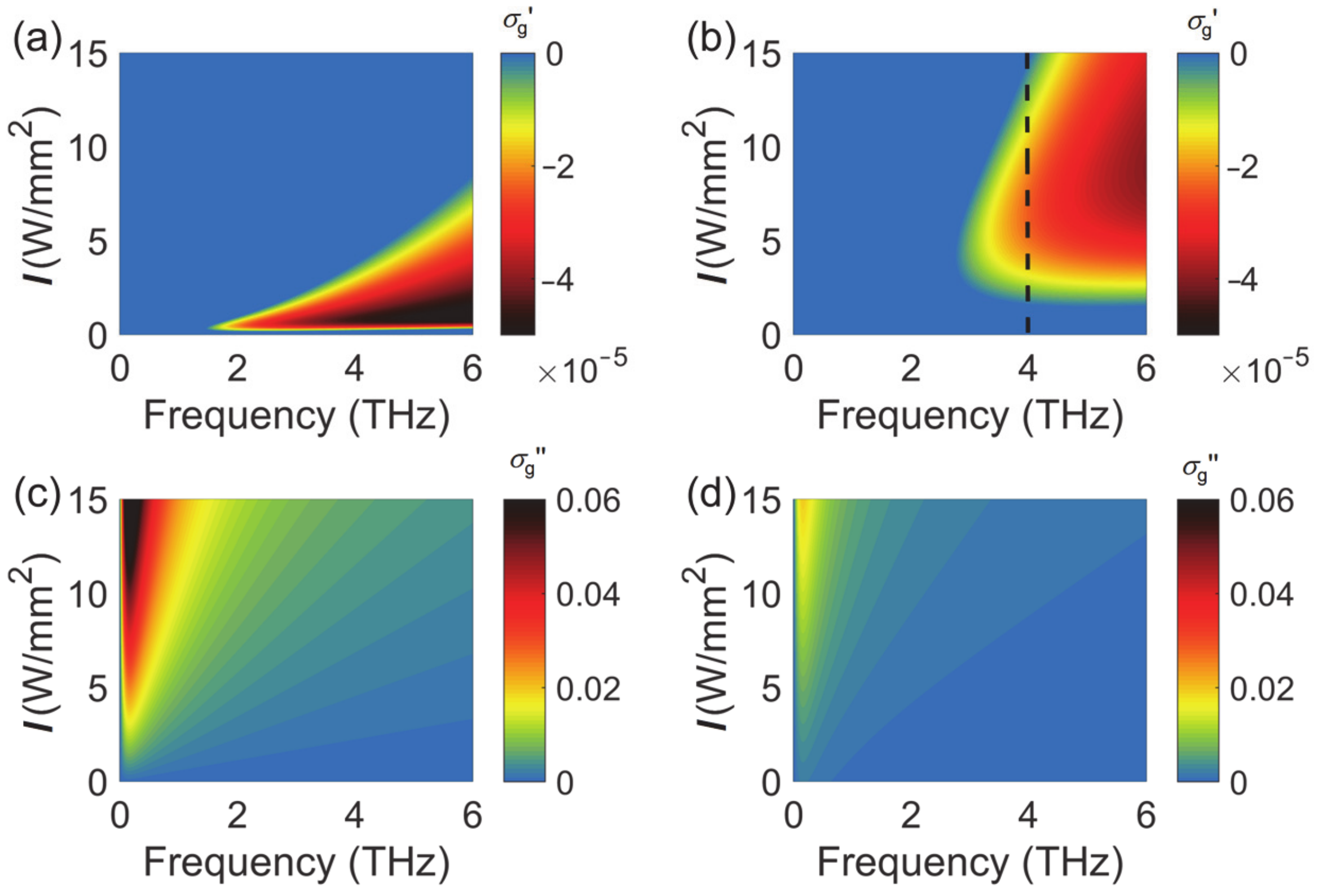
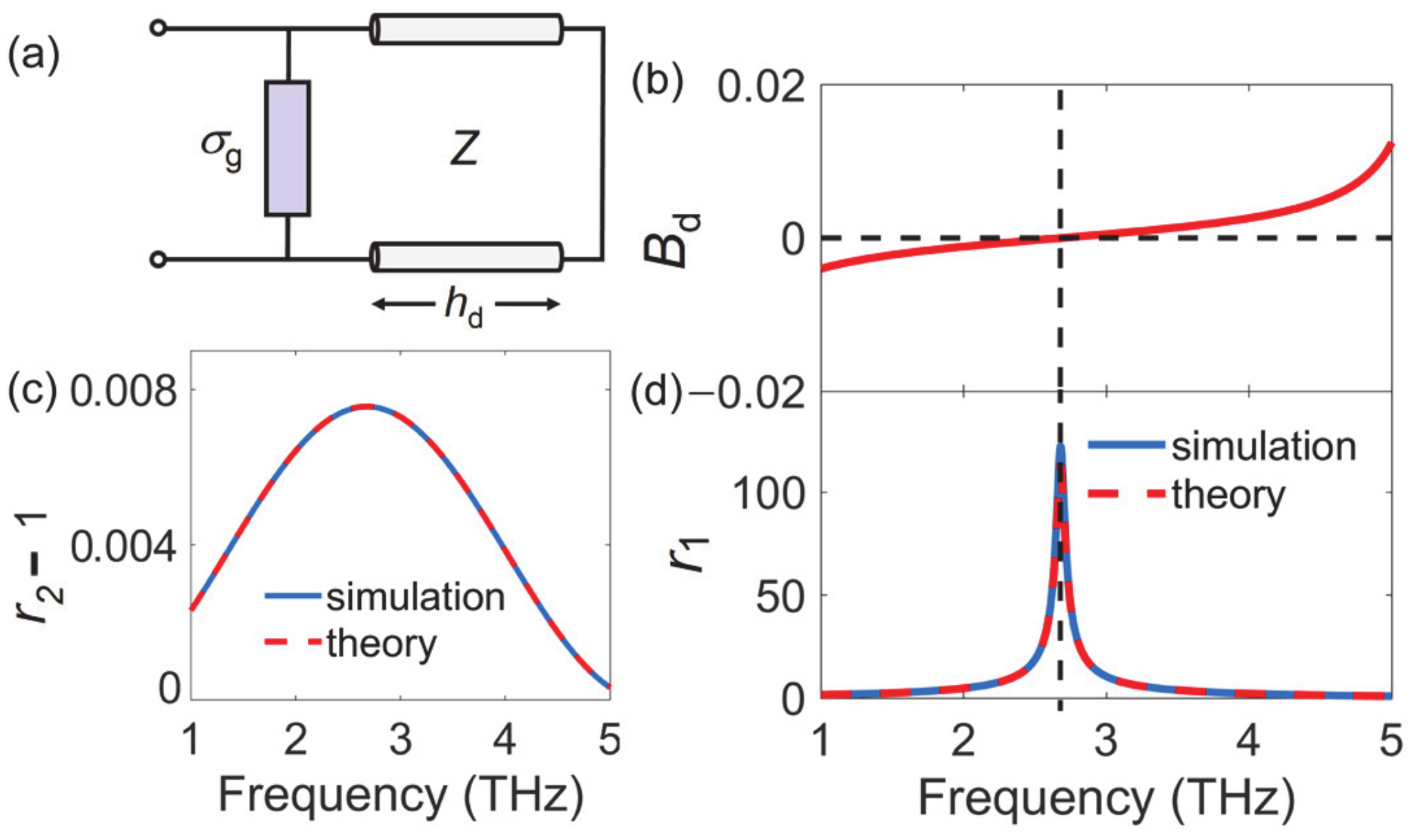

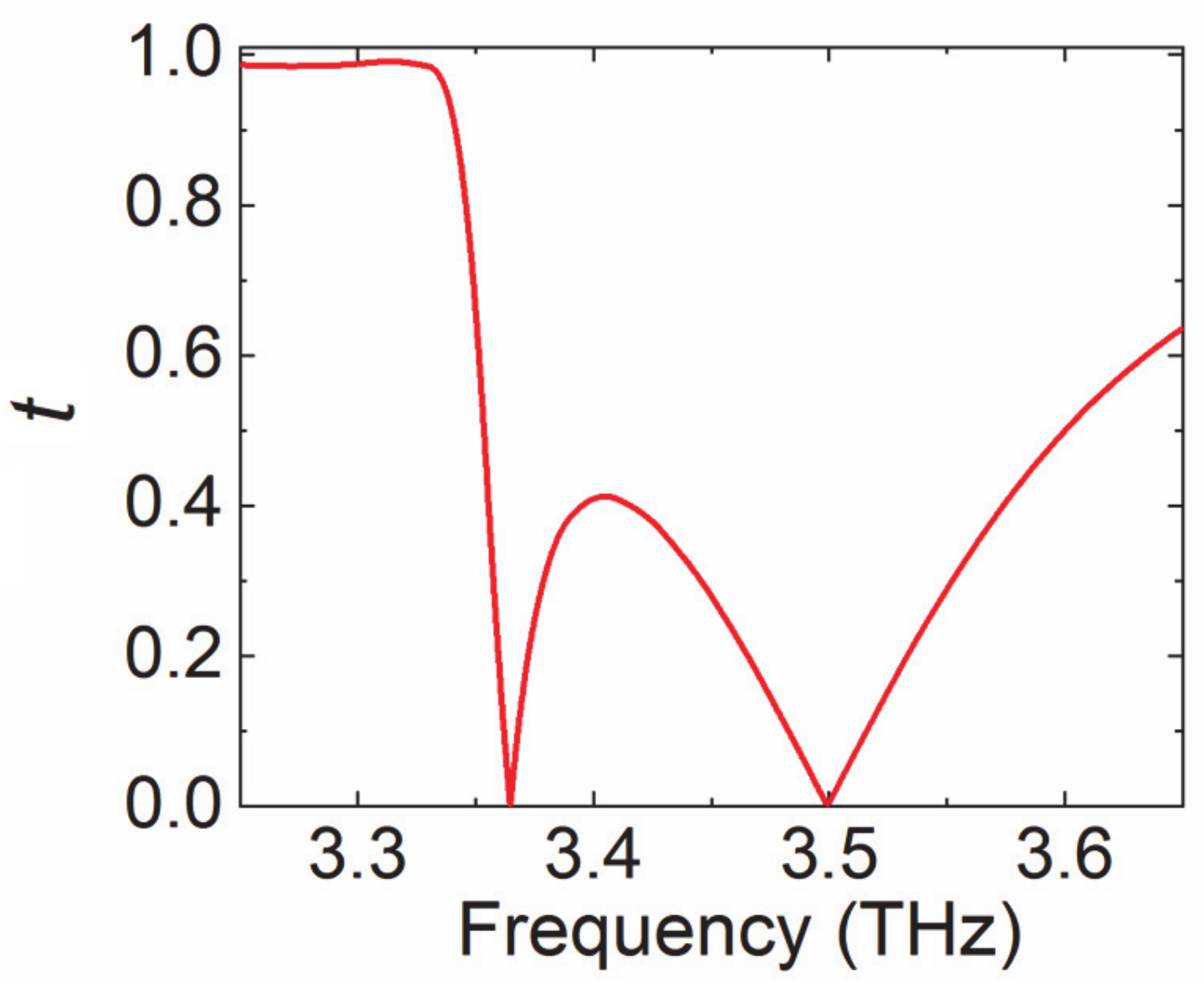
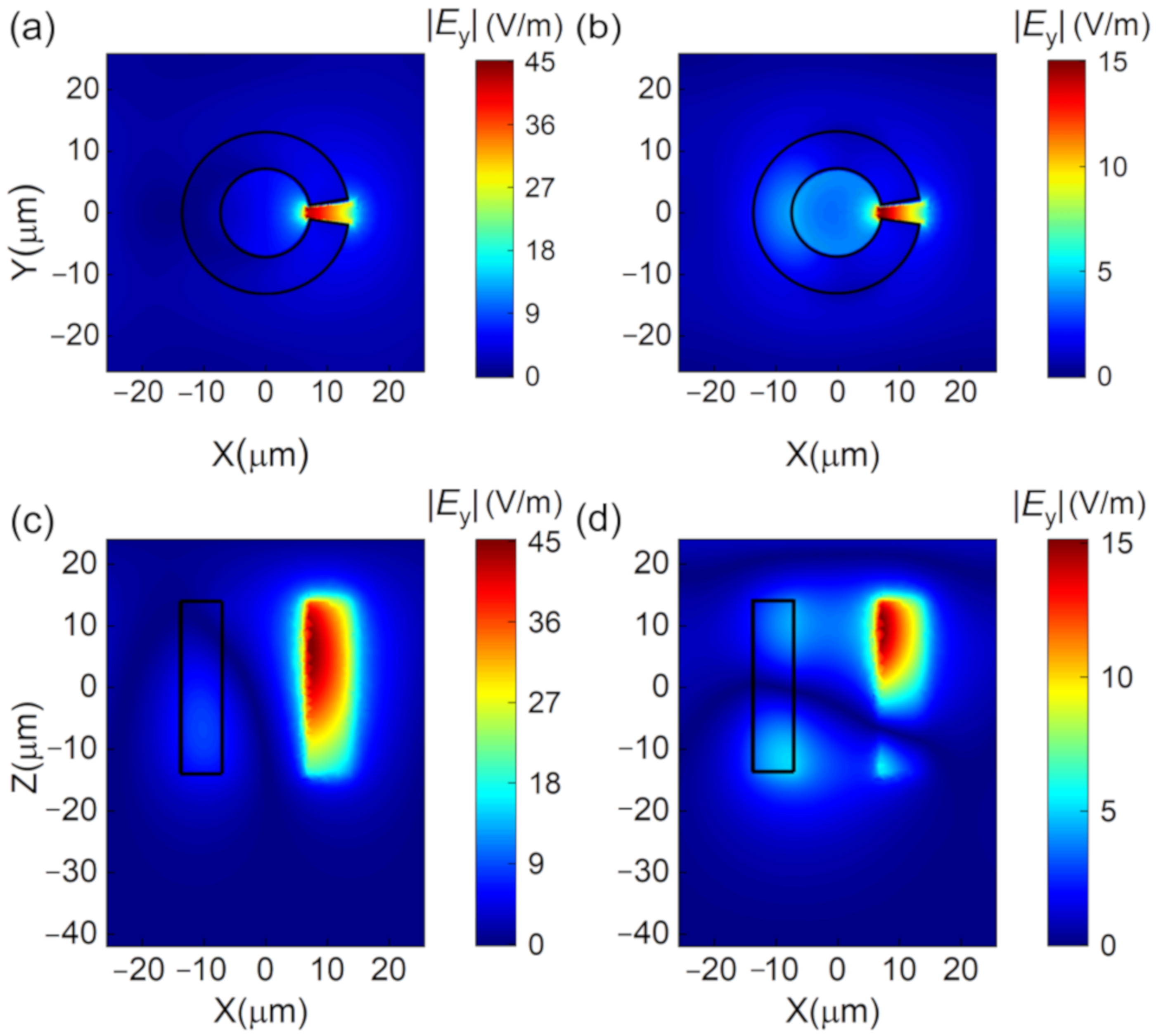
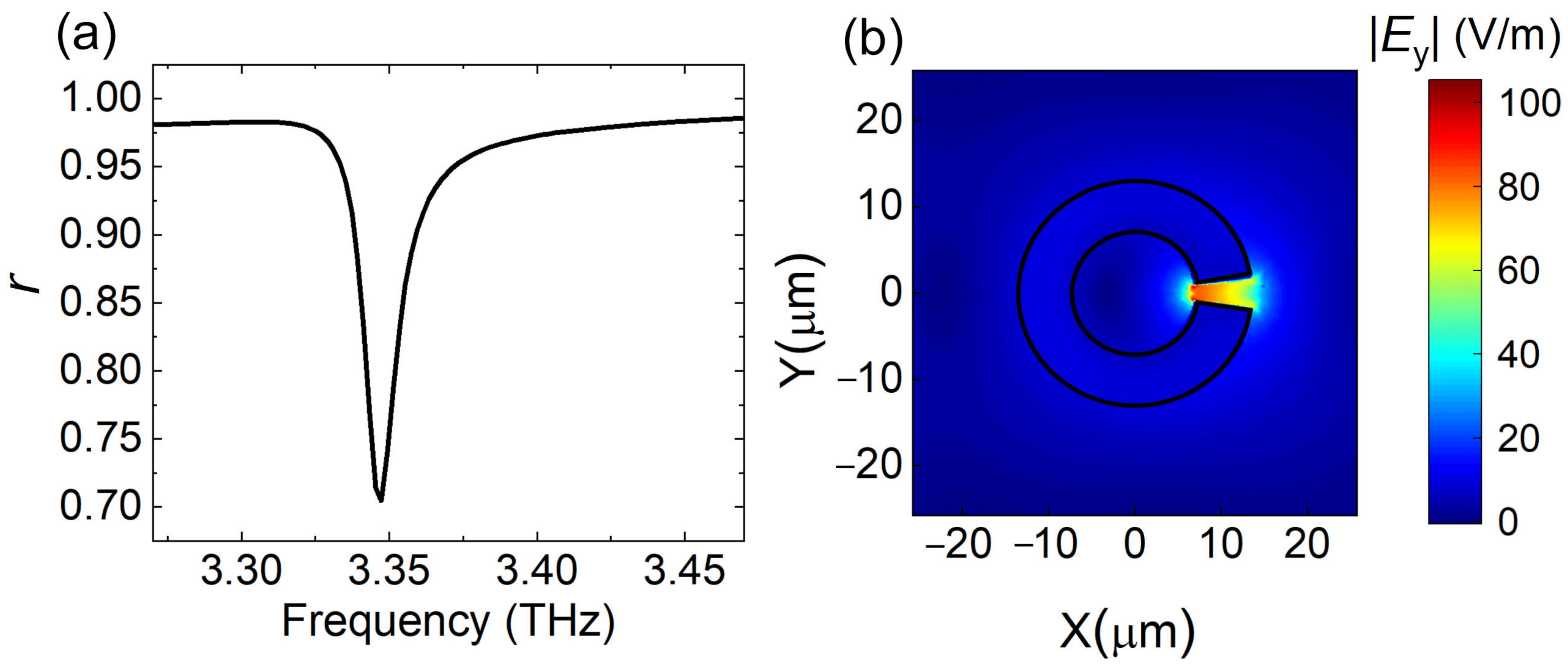
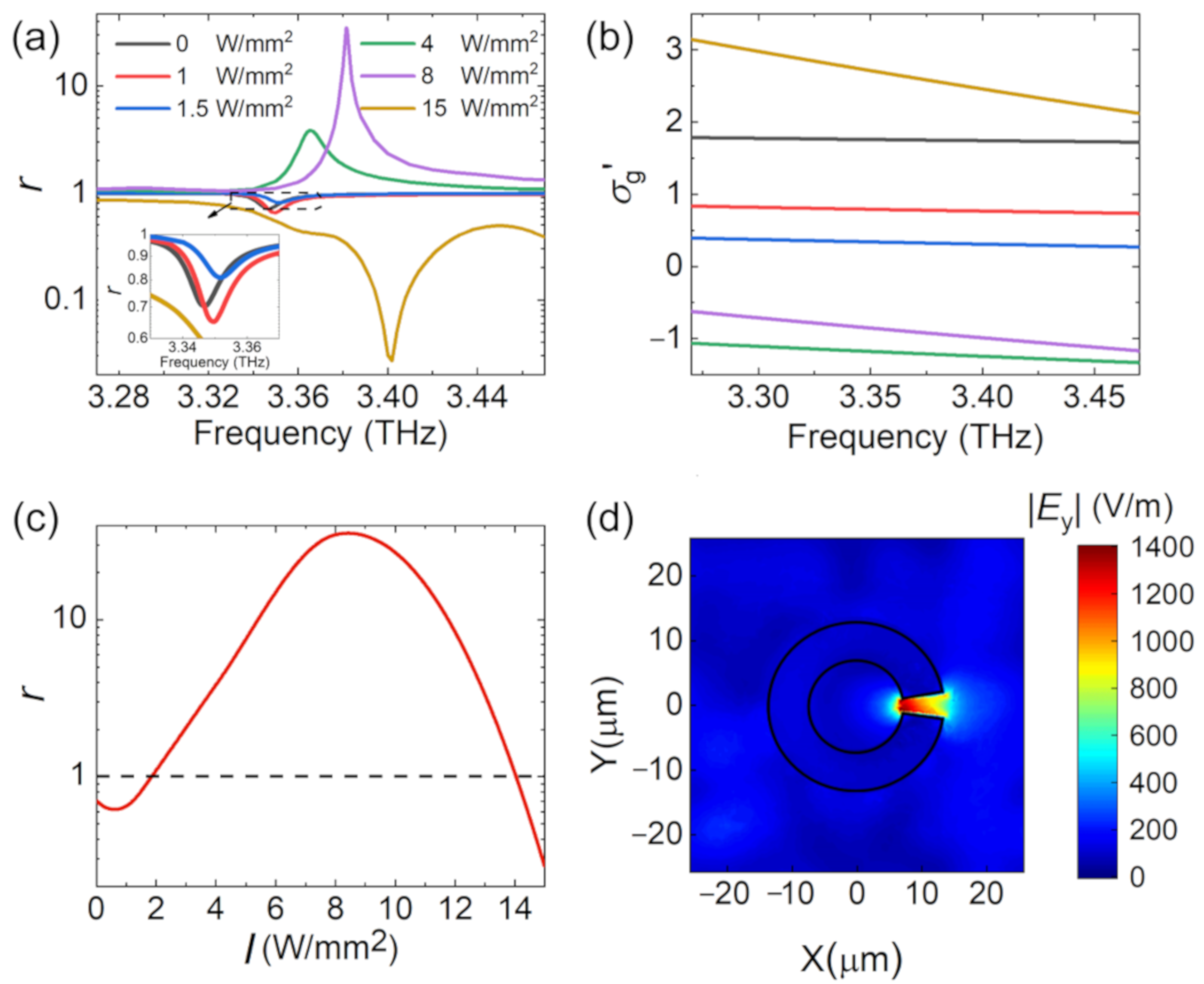
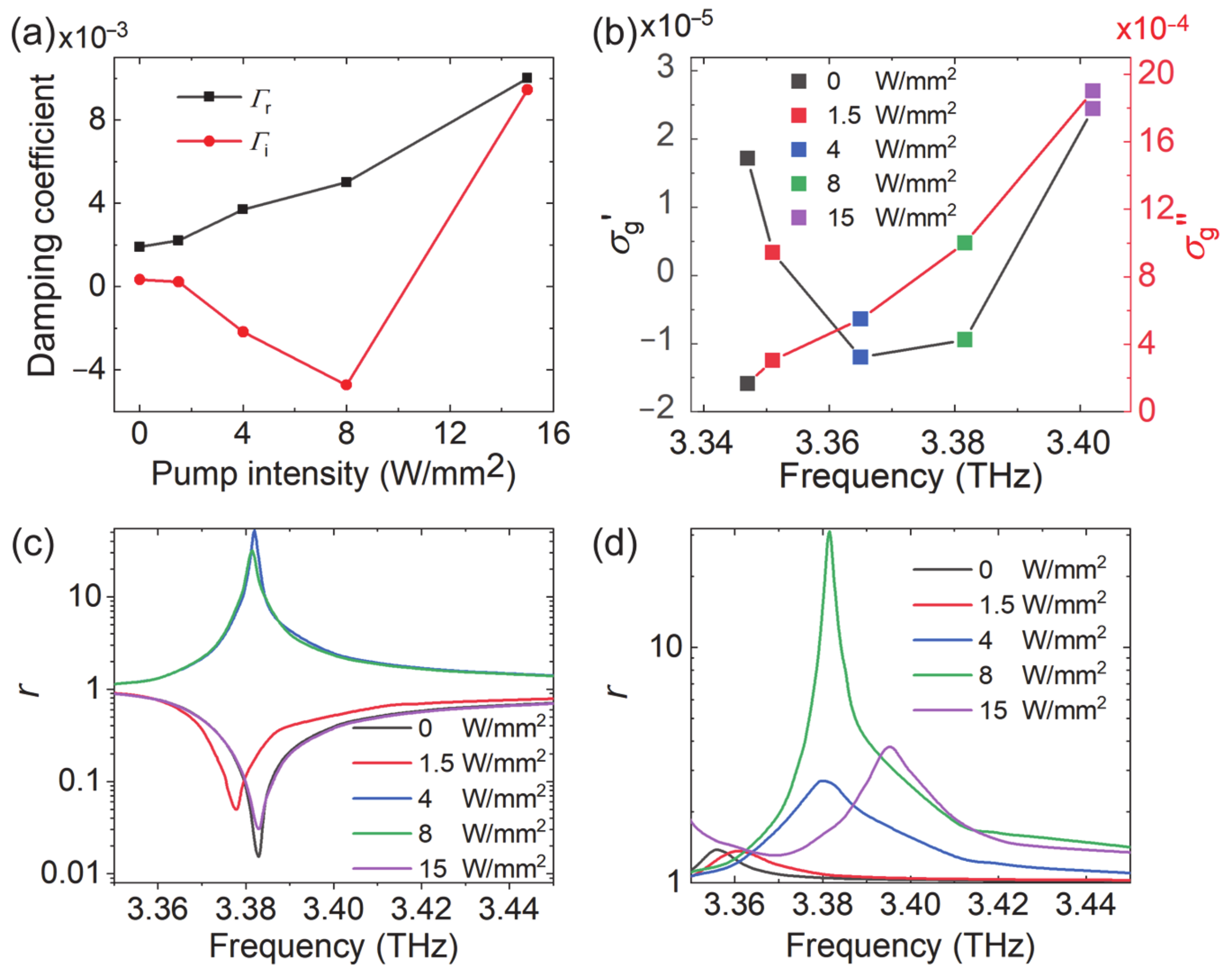
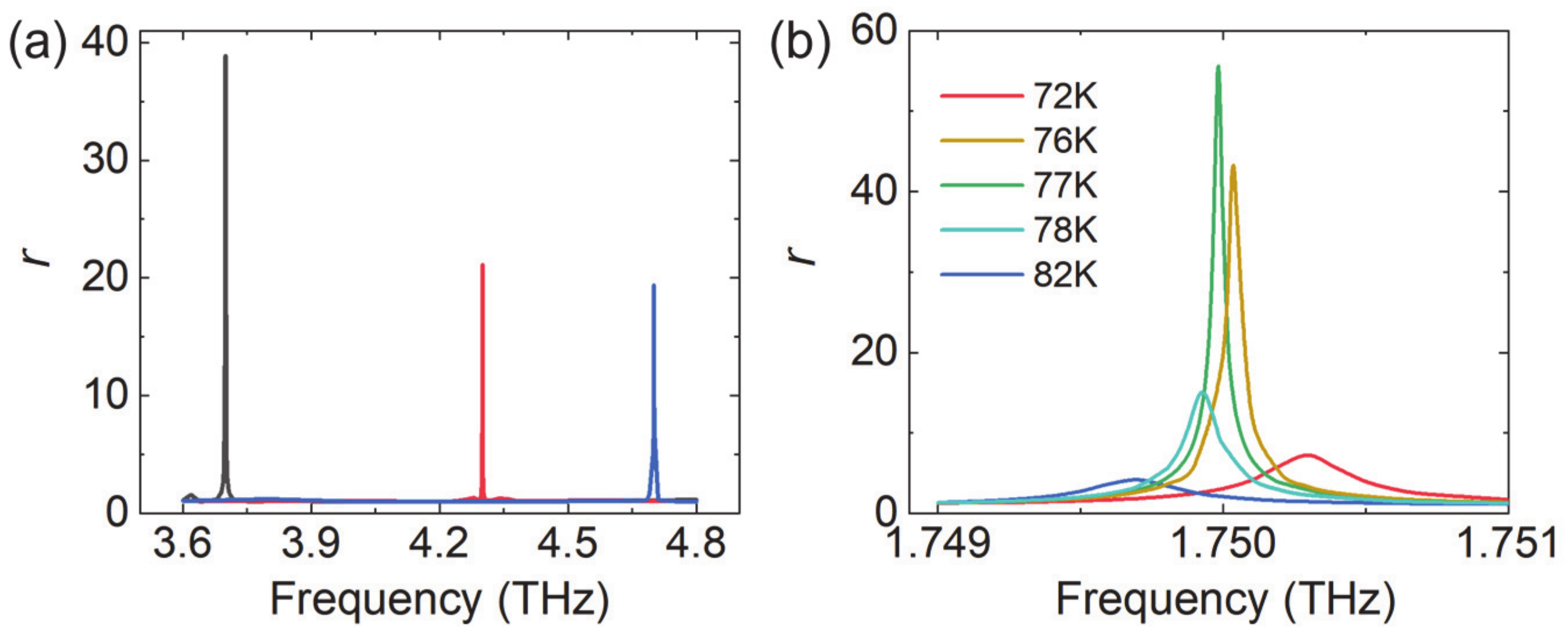
Publisher’s Note: MDPI stays neutral with regard to jurisdictional claims in published maps and institutional affiliations. |
© 2020 by the authors. Licensee MDPI, Basel, Switzerland. This article is an open access article distributed under the terms and conditions of the Creative Commons Attribution (CC BY) license (http://creativecommons.org/licenses/by/4.0/).
Share and Cite
Guan, S.; Cheng, J.; Chen, T.; Chang, S. Enhanced Terahertz Amplification Based on Photo-Excited Graphene-Dielectric Hybrid Metasurface. Nanomaterials 2020, 10, 2448. https://doi.org/10.3390/nano10122448
Guan S, Cheng J, Chen T, Chang S. Enhanced Terahertz Amplification Based on Photo-Excited Graphene-Dielectric Hybrid Metasurface. Nanomaterials. 2020; 10(12):2448. https://doi.org/10.3390/nano10122448
Chicago/Turabian StyleGuan, Shengnan, Jierong Cheng, Tiehong Chen, and Shengjiang Chang. 2020. "Enhanced Terahertz Amplification Based on Photo-Excited Graphene-Dielectric Hybrid Metasurface" Nanomaterials 10, no. 12: 2448. https://doi.org/10.3390/nano10122448




